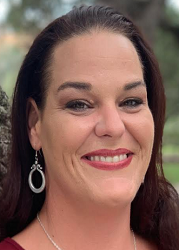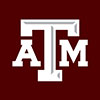What is STELLA?
STELLA is an evidence-based, one-way, dual-language, science-infused literary curriculum, and stands for:
Storytelling (and retelling) and higher-order Thinking for English Language and Literacy Acquisition
STELLA offers carefully selected child-centered, personal learning experiences with diverse literature to build strong academic vocabulary and oral and written language skills. Our lesson format is designed to present information in a way that makes it easy for teachers to teach, and for students to learn in a natural way with cross-linguistic transfer and increased retell fluency. STELLA uses repetition for comprehension effectively so that students can use their understanding of previously learned material in other learning experiences. STELLA combines these components:
- Integrated, research-based ESL strategies
- Higher-order leveled questions
- Academic vocabulary in the content areas of science and social science, both explicitly and implicitly taught
- Opportunities for students to practice language through retelling
- Academic writing opportunities
- Directed Maker Space explorations
- 21st Century Entrepreneurial Skills activities
STELLA’s cross-language transfer is based on the Four-Dimensional Bilingual Pedagogical Theory/Model developed by one of the authors, Dr. Rafael Lara-Alecio, with Dr. Richard Parker. Additionally, STELLA’s themed literature addresses social-emotional and academic development with positive reinforcement, organization of thought, inductive thinking, goal-setting, reflection, and shared learning practices. You may use STELLA as it is written, and that, we know, will yield increased academic language and literacy achievement. In addition, you may add your own ideas and activities to the structure.
Storytelling and Retelling
The “S” in STELLA stands for Storytelling.
Read-Aloud with Vocabulary Development
Each week, students will interact with one storybook. The structured story readings (with story retells) over the course of five days address varied cognitive levels and needs as students reach mastery of lesson objectives. Each Read-Aloud begins with a focus on building background vocabulary before the storytelling begins. After the storytelling, strategic questioning strategies encourage student involvement, accountability, and oral language development.
Day 1
- Build background vocabulary using vocabulary cards.
- Identify the book’s author and illustrator.
- Picture walk through the book without reading the words. Invite students to make predictions and draw meaning from the illustrations.
- Recall story elements using an anchor chart.
Days 2-5
- Review vocabulary introduced on previous days.
- Introduce new vocabulary using vocabulary cards.
- Read the story aloud, pausing to ask questions that prompt student understanding as you read.
- Reread portions of the story to clarify and reinforce word meanings, identify story elements, and encourage student engagement.
- Add new information to the anchor chart.
Higher-Order Thinking
The “T” in STELLA stands for Thinking (specifically, higher-order thinking).
What is higher-order thinking?
Higher order thinking skills are thought processes that help students connect information they receive in meaningful ways. These skills go beyond simply remembering or memorizing information, including:
- Creating: assemble, generate, construct, design, formulate, organize
- Evaluating: argue, defend, evaluate, debate, test, verify, judge
- Analyzing: dramatize, interpret, solve, discover, use, illustrate
- Understanding: interpret, summarize, infer, explain, paraphrase
- Remembering: list, memorize, repeat, reproduce, duplicate
How higher-order thinking is applied in STELLA
Leveled questions are strategically scripted throughout the daily lesson plans. STELLA encourages student engagement by using the following sequence:
- Ask scripted leveled questions and provide at least 5-10 seconds of quiet think time for students to process the question and brainstorm responses.
- Choose a method to provide all students a chance to respond, such as:
- Think-pair-share: students share a verbal response with a partner
- Choral response: students respond with a one- or two-word predictable answer unison
- Visual cue: students respond with a non-verbal cue, such as a thumbs up or thumbs down
- Write or illustrate: students drive or write short response on a dry erase board
- After all students are engaged in responding to the question, randomly select a few students to respond or share with the whole class. Use craft sticks with student names or a randomization app to be sure all students get this opportunity.
- Provide specific feedback that reinforces the concept. For example, instead of saying, “Good job,” a teacher might respond by saying “Good job identifying the main character for our story.”
Benefits of higher-order thinking
There are many benefits to encouraging students to use higher-order thinking. Higher-order thinking:
- Creates opportunities for students to think independently and use target language.
- Helps students discover and fill gaps in the knowledge when they are justifying and explaining (correct misunderstandings).
- Benefits cognitive development by supporting the development of language and intelligence.
- Helps develop students’ length of utterance and syntactic complexity.
English Language and Literacy Acquisition
The “ELLA” in STELLA stands for English Language and Literacy Acquisition.
Research-Based Curriculum
STELLA is based on research and evidence that indicate that it is effective to increase students’ receptive and expressive oral language development, knowledge of syntax, morphological awareness, phonological processing, decoding skills, and reading fluency and comprehension when engaged in the curriculum. STELLA was tested in two large experimental United States Department of Education–funded studies in schools with English learners in various types of bilingual/English as a second language/English as foreign language classrooms.
Important Findings
- STELLA can accelerate English learners’ oral English acquisition and remove their initial disadvantage.
- STELLA can promote bilingualism and biliteracy in English and Spanish.
- STELLA can enhance students’ self-esteem in English language acquisition.
- Students receiving STELLA outperformed their comparison peers in story grammar elements in both English and Spanish.
- STELLA enhanced students’ performance in state English proficiency assessment (TELPAS).
- Students exposed to STELLA outperformed peers on state standardized assessments in reading and English.
In addition to students in the United States, STELLA is also found to be beneficial for students in English-as-foreignlanguage (EFL) settings regarding their oral language proficiency acquisition. Moreover, no gender difference was identified in STELLA. Therefore, STELLA proves to be an effective curriculum that is of high quality, particularly for elementary school English learners.
STELLA Enrichment
STELLA offers weekly enrichment activities. While these aren’t an essential part of the daily core lesson, they are the perfect way to infuse creativity into language learning.
STELLA offers a weekly activity to teach entrepreneurship for students to develop 21st century entrepreneurial skills:
- Goal setter
- Financially literate
- Communicator
- Giver
- Problem finder and solver
- Celebrator of failures
- Persuader
- Critical independent thinker
- Researcher
- Task committed
There are eight major pedagogical strategies that teachers should engage in when teaching entrepreneurship to young learners:
- Use culturally competent pedagogy
- Identify students with underused talent
- Teach small business skills
- Teach students creative thinking skills
- Teach problem finding and problem solving
- Teach students about timing
- Teach organization
- Be a mentor and find a mentor
Teaching all young learners such skills equalizes education while creating opportunities for all students. This ensures social justice in schools and lays equal footing for the many, rather than the few.
STELLA offers a weekly Directed Maker Space exploration. Directed Maker Space provides a way for students to learn, explore, and be creative while developing language skills.
STELLA fuses literacy and creativity together through exploration activities fueled by scientific models that are used as a foundation for the development of new understandings, language development, and creativity. The scientific models fall into three subcategories:
- Verbal combined with visual models
- Expressed mental models that represent complicated ideas; thinking about abstract ideas
- Reflective group collaboration
Always provide a “Maker Space Big Box” in the location where students will be exploring these activities. While each activity includes a list of essential materials, always encourage students to incorporate materials from the “Maker Space Big Box” to ignite imagination. Continue adding supplies (e.g., blocks, fabric, craft supplies, recycled containers, cardboard) to your “Maker Space Big Box” all year. Be creative!
STELLA Lesson Overview
Daily Instruction: 45 minutes
- 35 minutes to build background vocabulary and present a guided reading lesson
- 10 minutes for Academic Oral and Written Language (AOWL) practice
Academic Oral and Written Language (AOWL)
STELLA supports the use of academic language by identifying and directly teaching vocabulary, modeling the use of the vocabulary, and encouraging students to respond in a complete sentence. This part of the daily lessons uses picture-supported AOWL Cards.
The green text in the lesson plan offers strategic first language clarifications to support second language development.
Build Background Vocabulary
Each lesson begins with vocabulary building using picture-supported vocabulary cards.
- Black text is instruction to guide teachers through the lesson.
- Blue text is the script teachers will say to students.
- Green text offers language-clarifying support for bilingual language development.
Shared Writing
This part of the lesson is mirrored in the student workbook. Students record their individual responses using a complete sentence while practicing handwriting skills.
Read Aloud
After introducing and reinforcing vocabulary, the guided reading lesson is presented for whole-class participation. It is suggested that teachers place the book on a document camera to make it more visually available to all students. Each Read Aloud includes the infusion of higher-order questioning strategies to encourage student involvement and oral language development.
Directed Maker Space and 21st Century Entrepreneurial Skills
Each week, students have the opportunity to participate in one Directed Maker Space exploration and one 21st Century Entrepreneurial Skills activity.
STELLA Program Components
Book Collections
27-28 titles per grade level (1 copy each)
STELLA includes collections of carefully curated fiction and nonfiction books with one book featured each week.
- Grade K-2: 28 books
- Grade 3: 27 books
Anchor Charts
Anchor Charts are an important visual scaffold that help students organize information as they have repeated encounters with a book. Anchor Charts are printed on card stock. You will add information to each anchor chart throughout the week as you progress through the week’s lessons. Here are three ways to use the anchor charts:
- Use a document camera to project a pre-printed anchor chart on the wall.
- Draw the anchor chart on chart paper using markers.
- Invite students to use the anchor charts that are often included in their workbook pages.
Teacher Guide
The Teacher Guide features 28 units that support the titles in the book collection. There are five lessons per unit. Each lesson is formatted on a 2–page spread. See pages 6-7 for more details about the lesson components.
Download sample teacher guideVocabulary Cards
STELLA helps make language and vocabulary understandable by using realistic photographs. Vocabulary Cards offer visual scaffolding. These picture-supported word cards allow students to hear corresponding words while making connections to the visuals.
The visuals on both the Vocabulary Cards and the AOWL Cards also support the development of academic vocabulary. Academic vocabulary describes the language that students hear in school that is uncommon in their everyday conversations.
Download sample vocabulary cardsWorkbooks
Student Workbooks are designed to support daily lessons. Each day includes two or more workbook pages for students to complete.
- The first page is a follow-up to support the Build Background Vocabulary part of the lesson.
- The second page supports content and discussion from the AOWL activities. Oral vocabulary development is supported with a shared writing activity.
Handouts
Handouts are reproducibles that support lesson content. They often include patterns for students to cut out and manipulate.
Download sample handoutAOWL Cards
AOWL (Academic Oral and Written Language) Cards offer visual scaffolding to make language and vocabulary understandable with the display of realistic photos. These images allow students to hear the corresponding words and make connections to the visuals.
Each card includes a target question. Students choose one of the three images to answer the question using a complete sentence.
Example:
- Question: Which animal frightens you?
- Response choices: lizard, cat, mouse
- Response: A lizard frightens me.
Assessment
The Teacher Guides for Grade 2 and Grade 3 include a 2-page assessment at the end of each of the 28 units. The first page is a reproducible for students to complete. The second page is the teacher answer key
Manipulatives & Supplies
Hands-on materials provide students with the opportunity to use their senses in learning. Hands-on materials vary by grade level. Examples include:
- Magnifying glasses
- Play dough
- Bar magnets
- Compass
- Flashlights
- Animal counters
Contact Us

Matthew J. Etchells, Ph.D.
EOMC Director of Education Outreach, Marketing and Communications; APLUS Lead Coordinator

